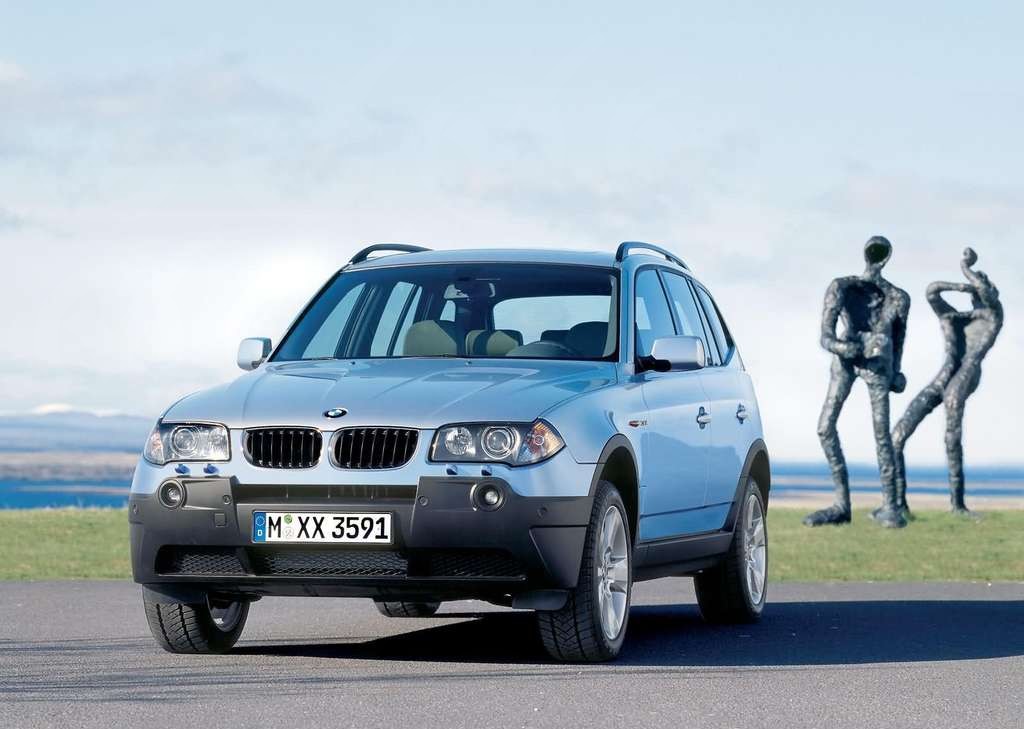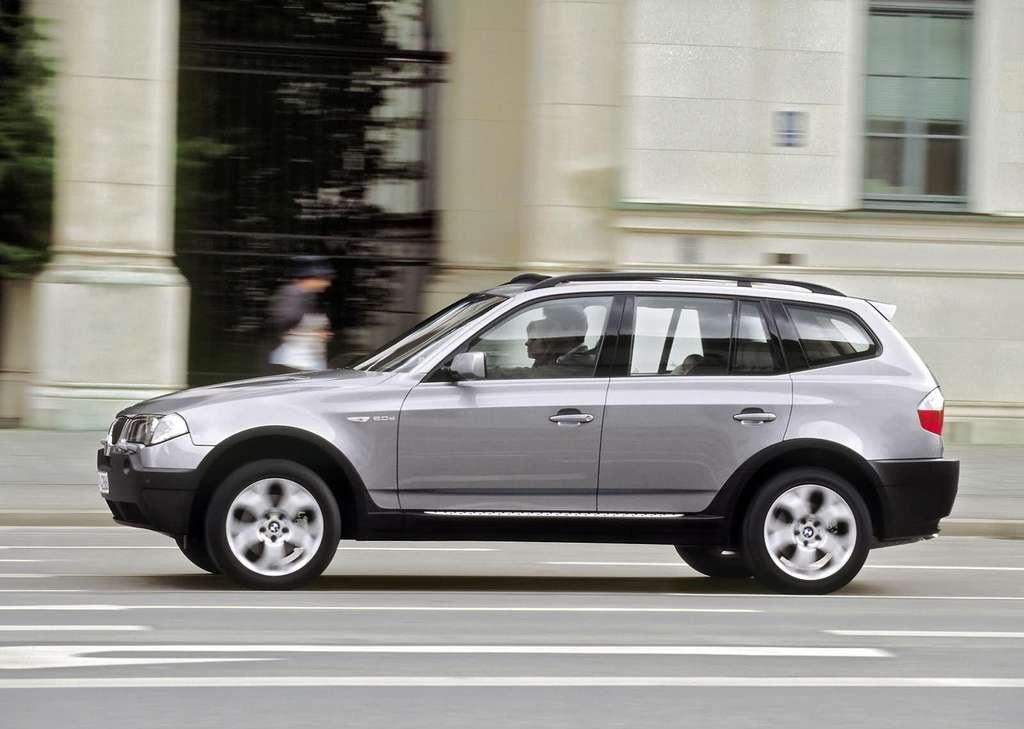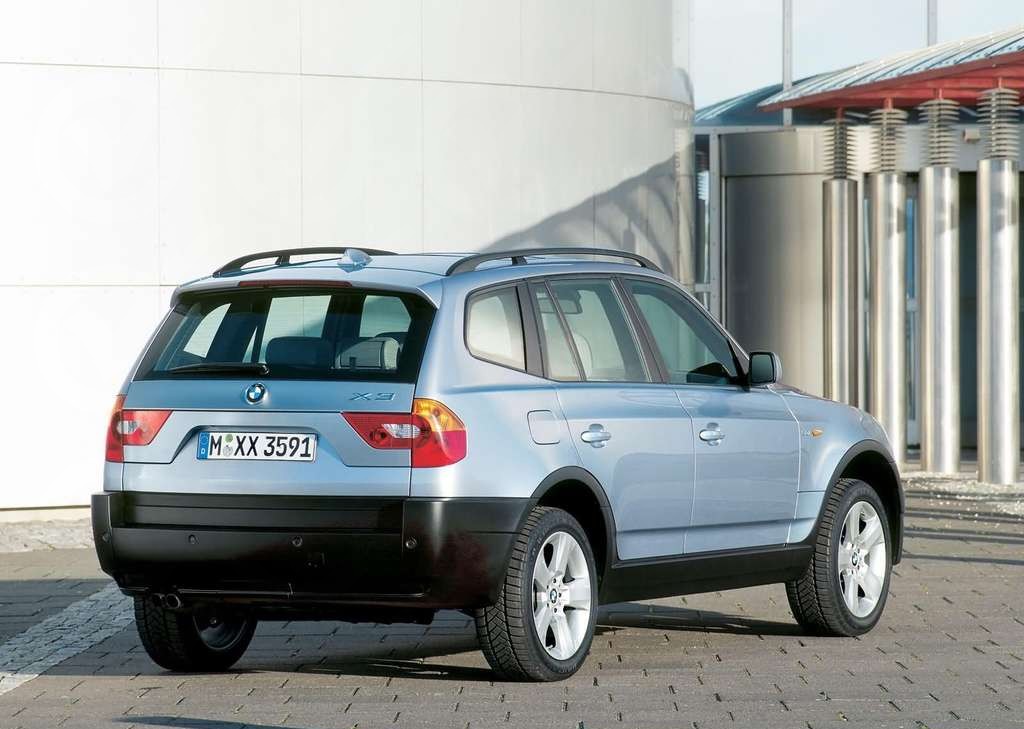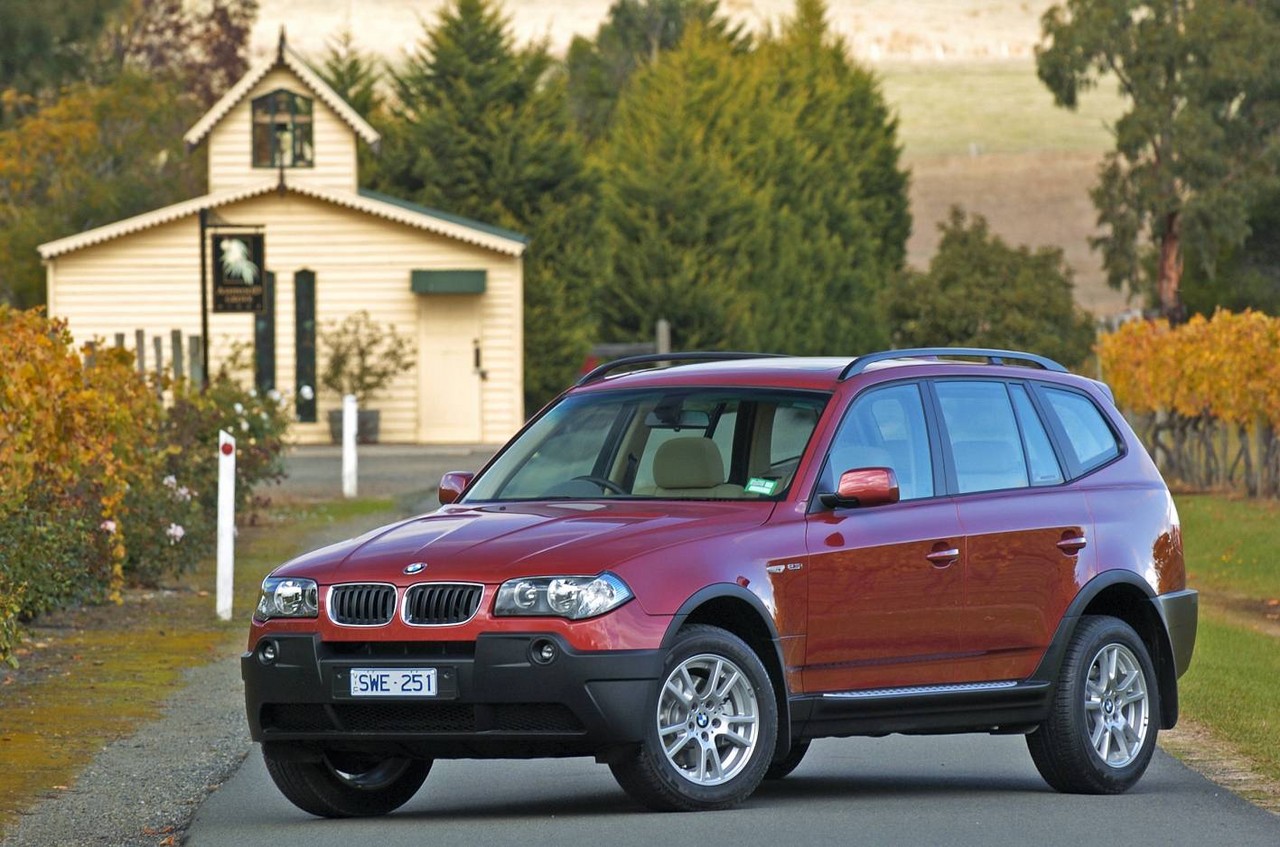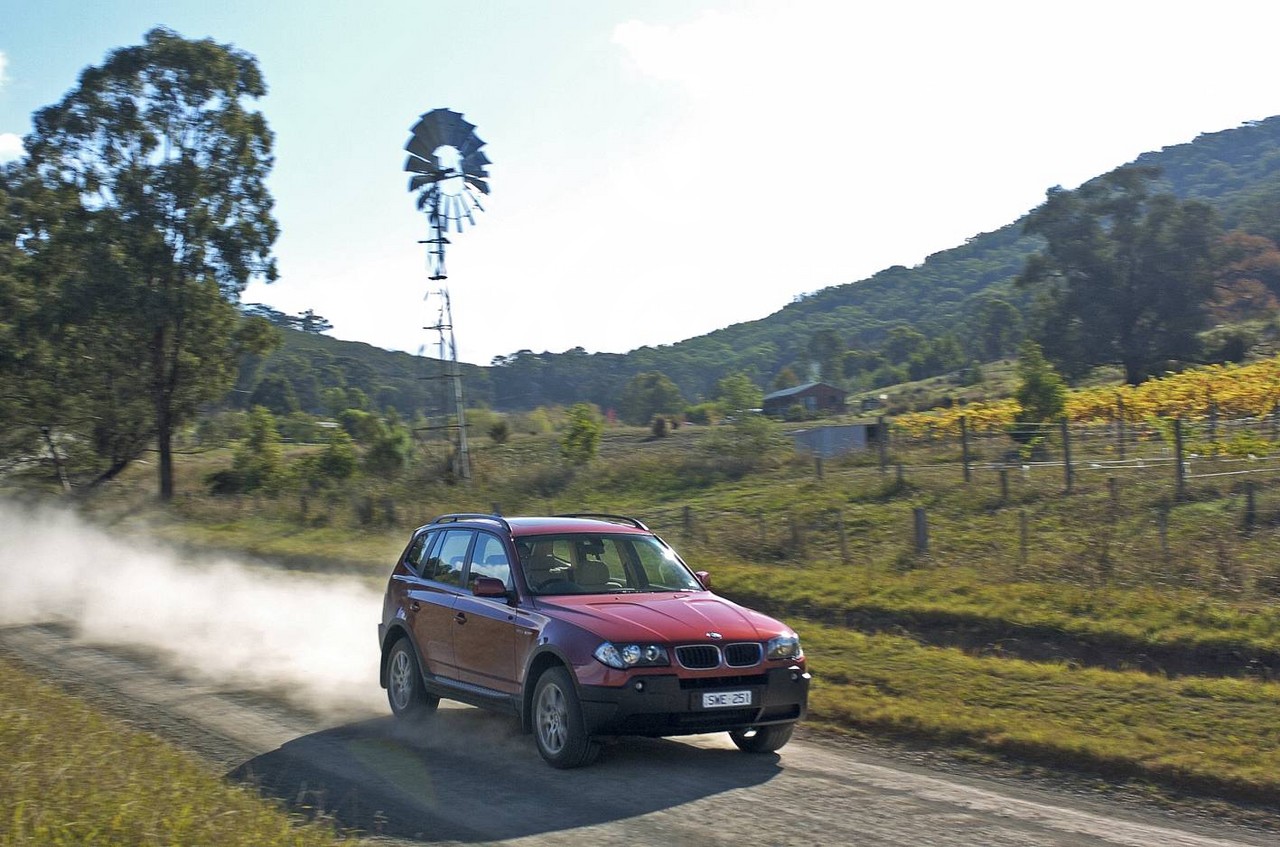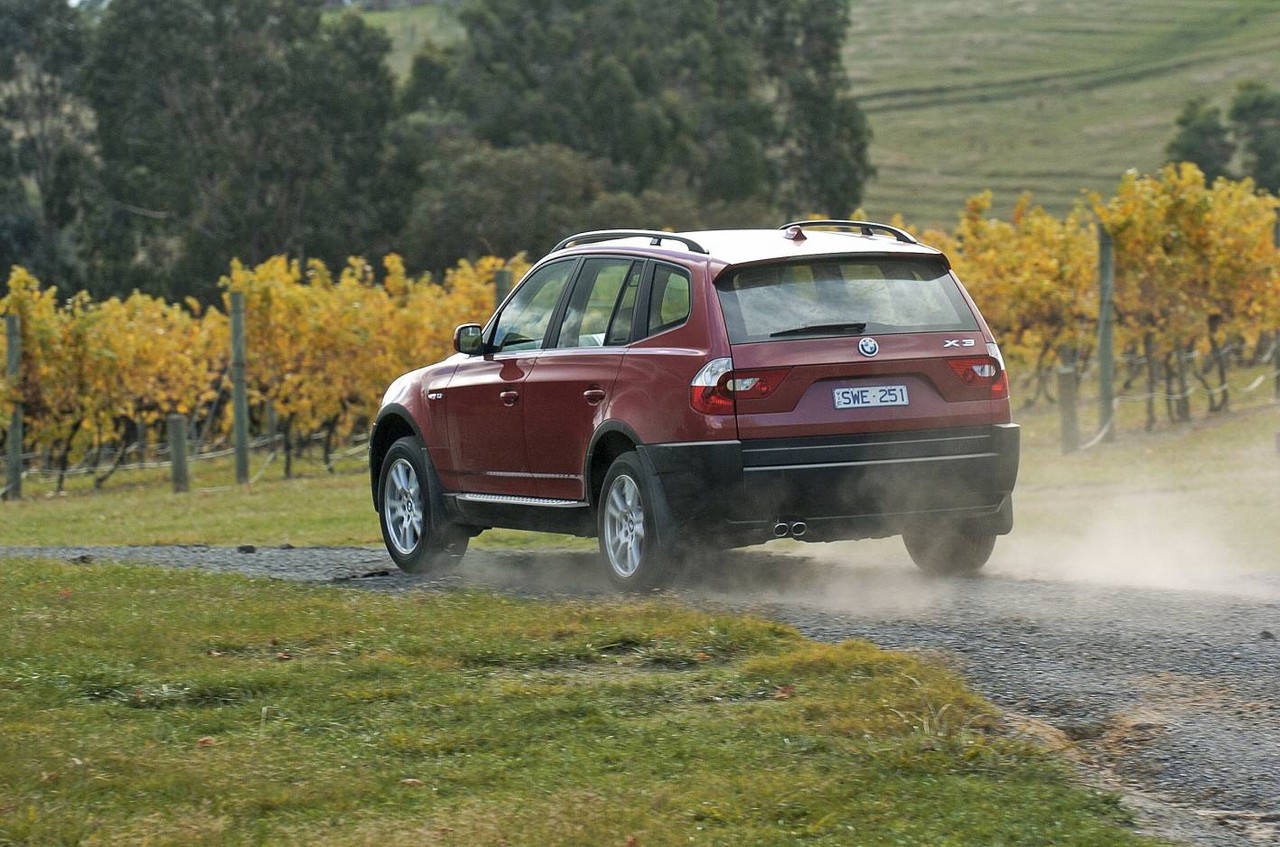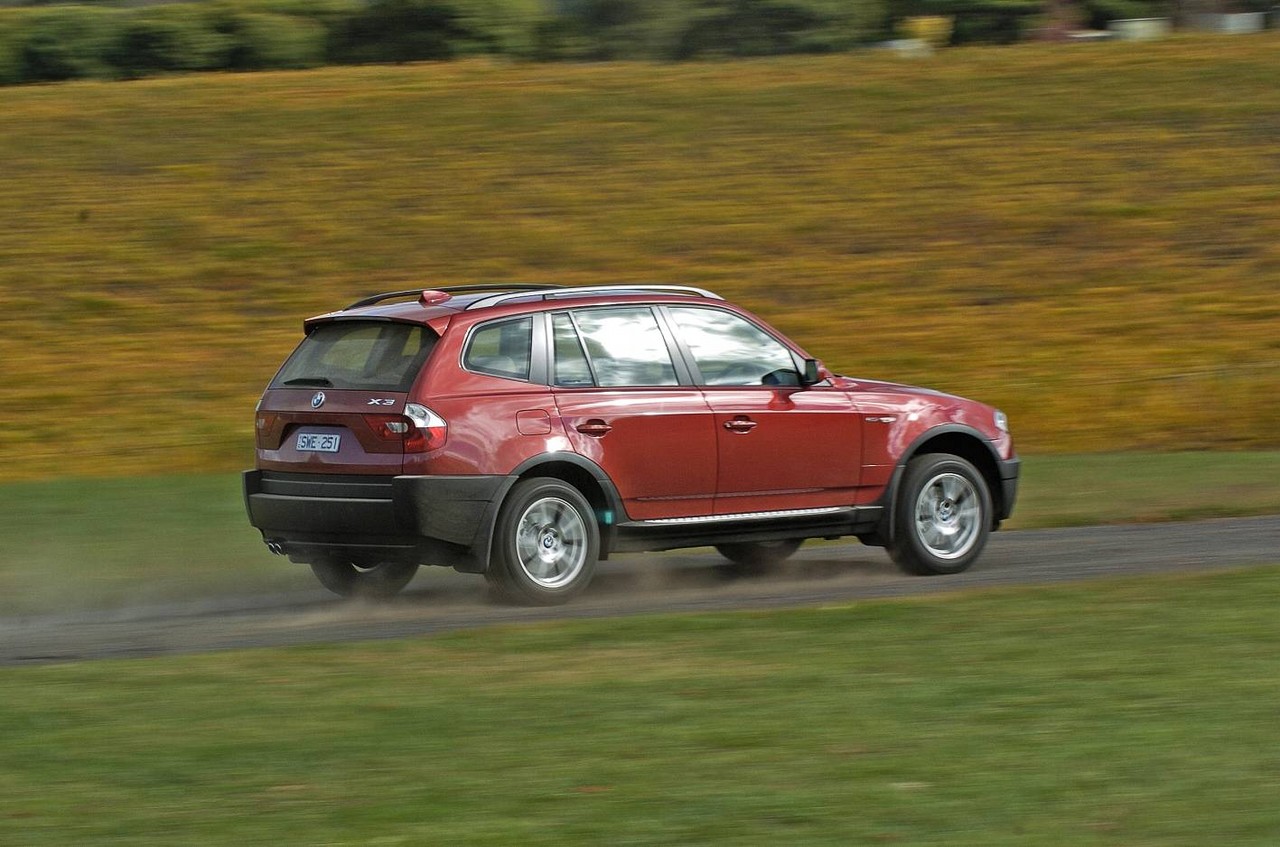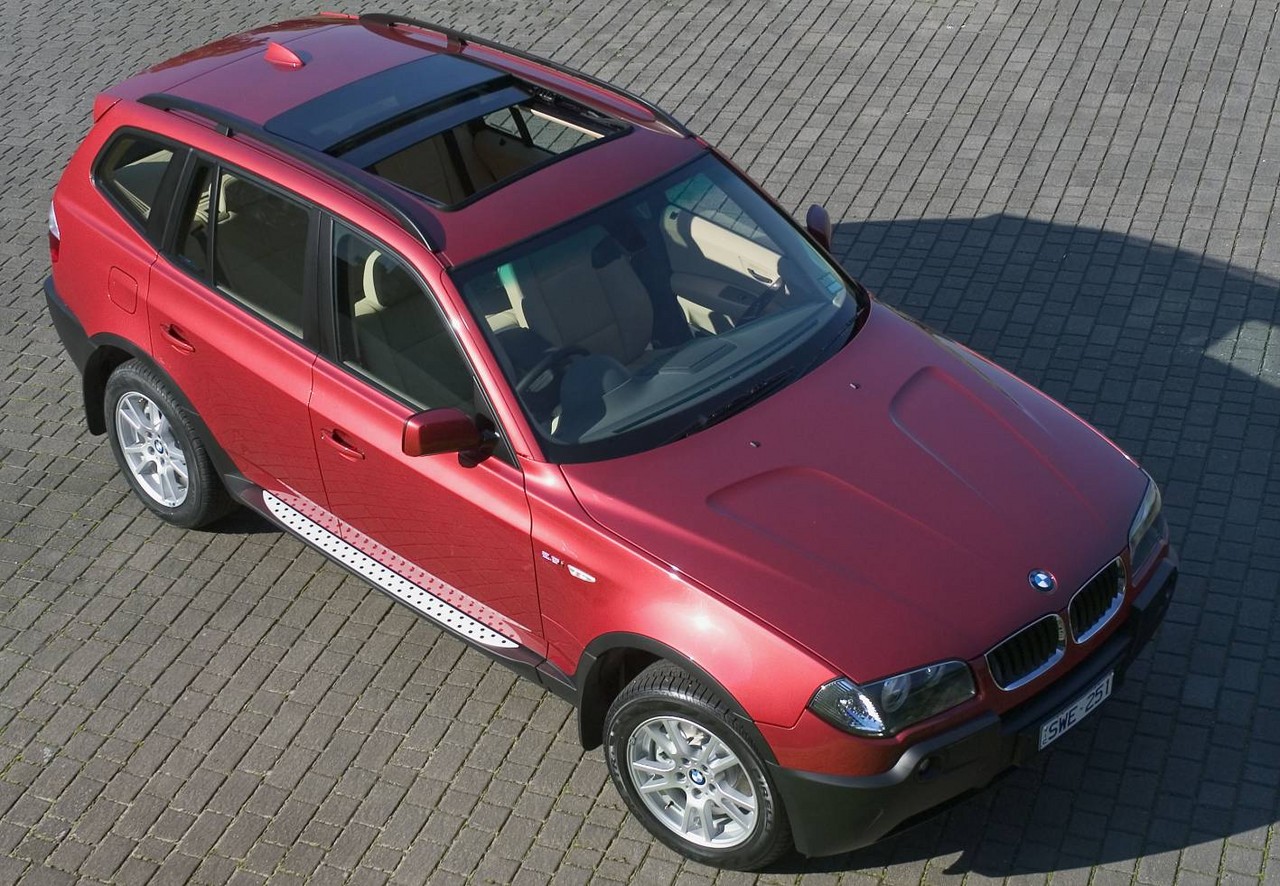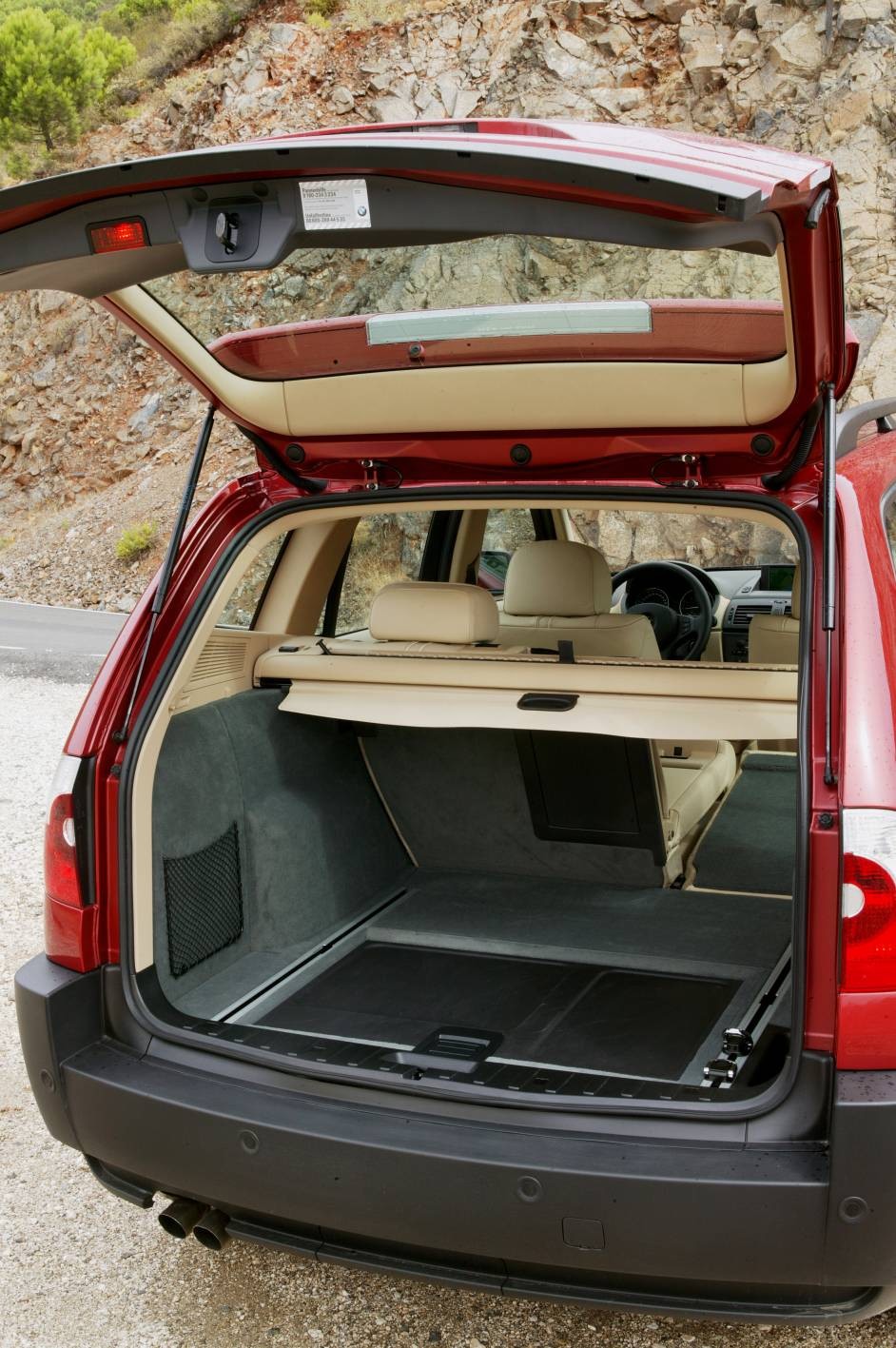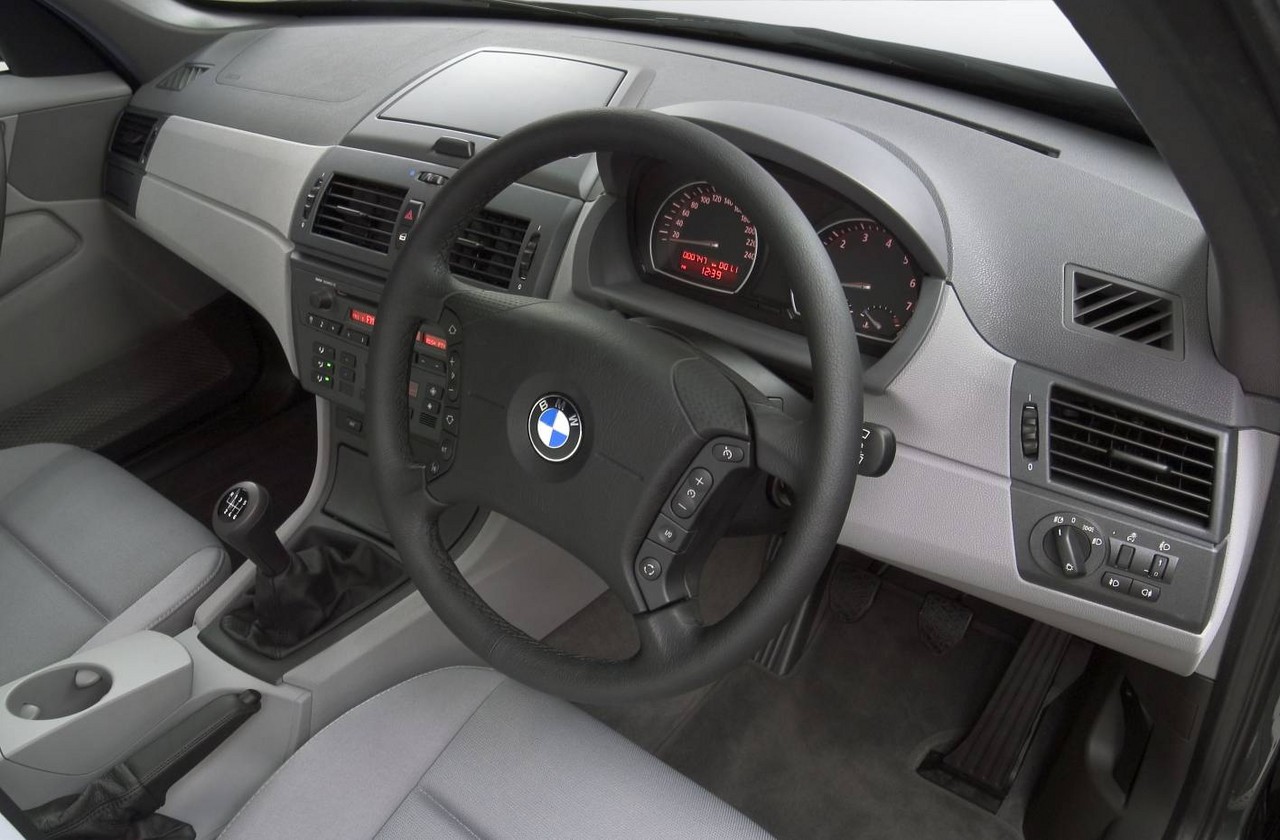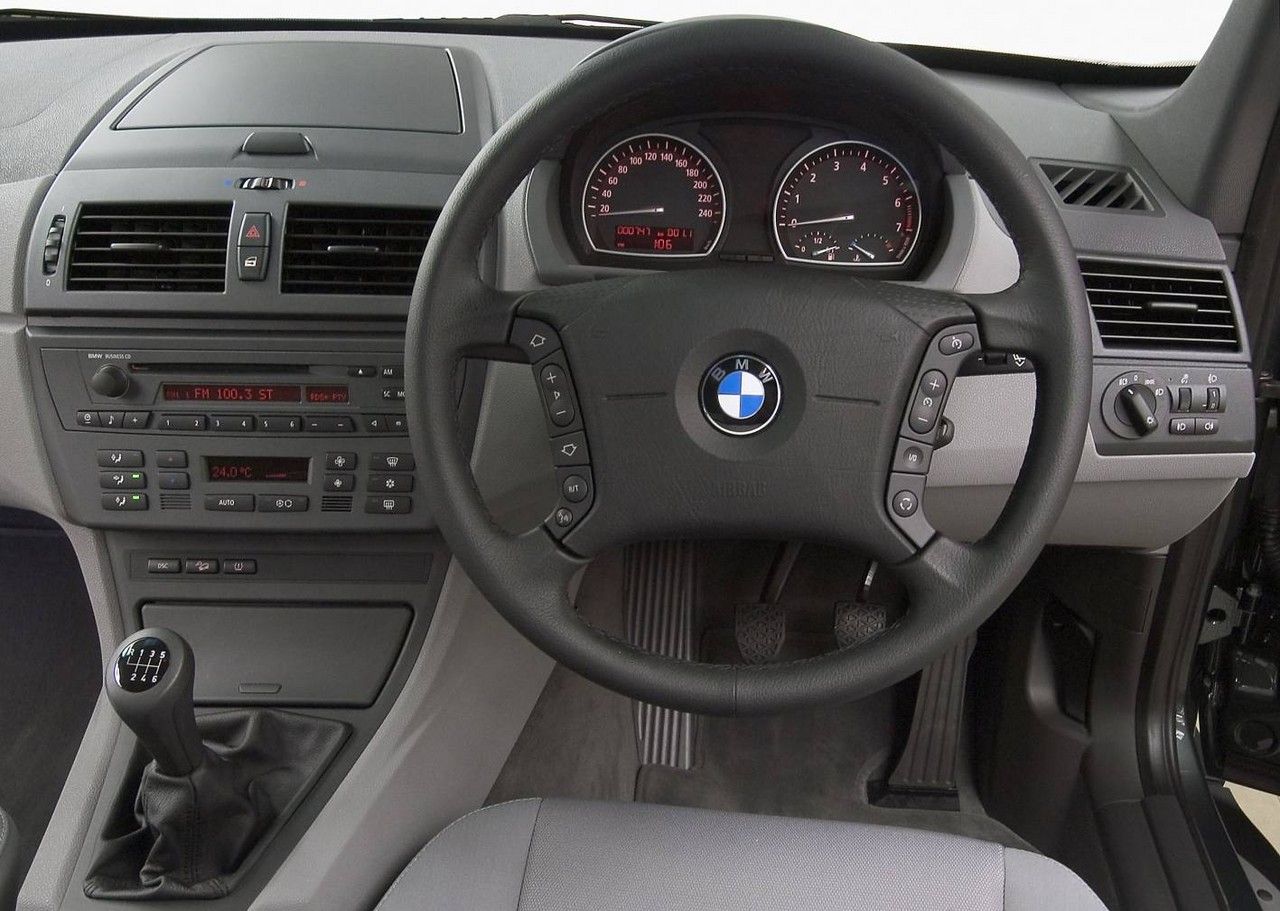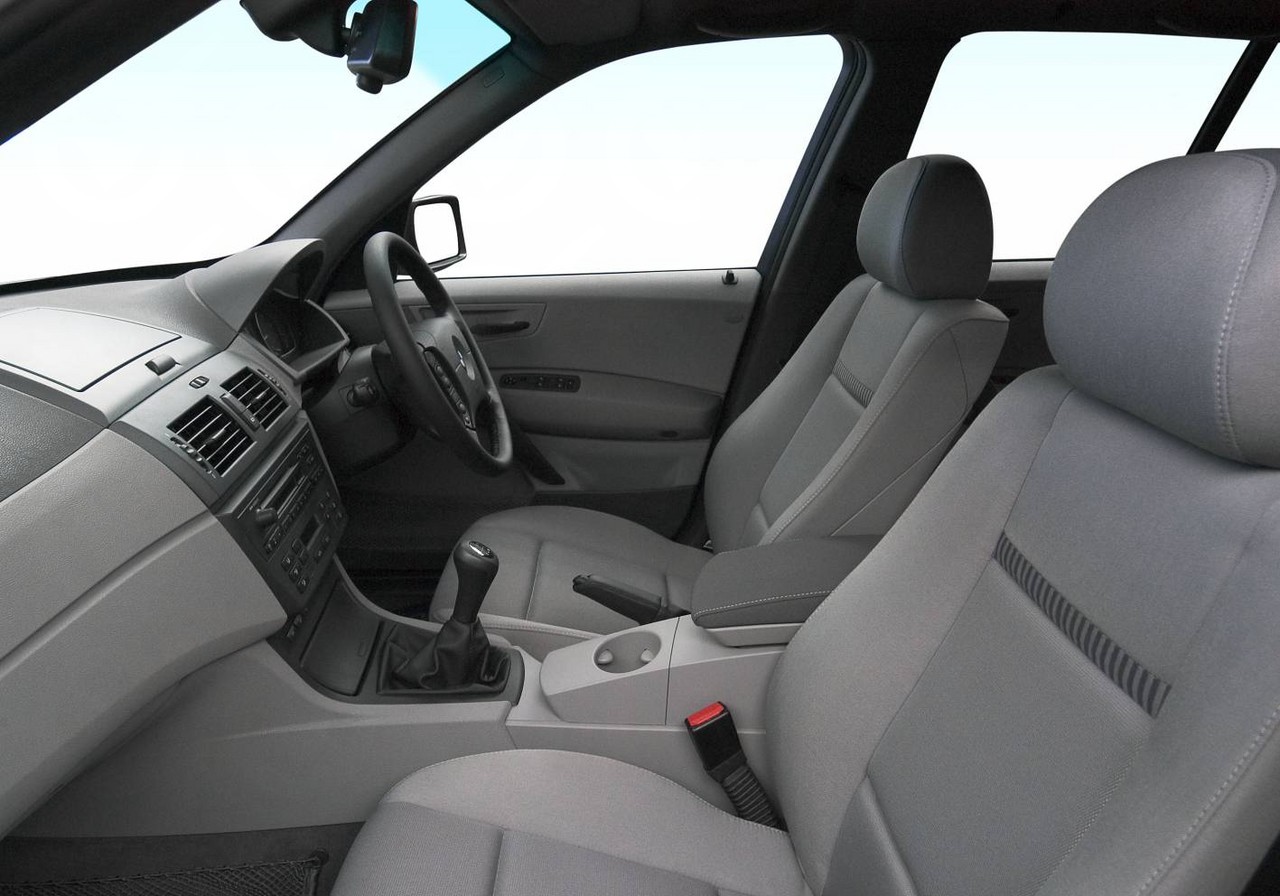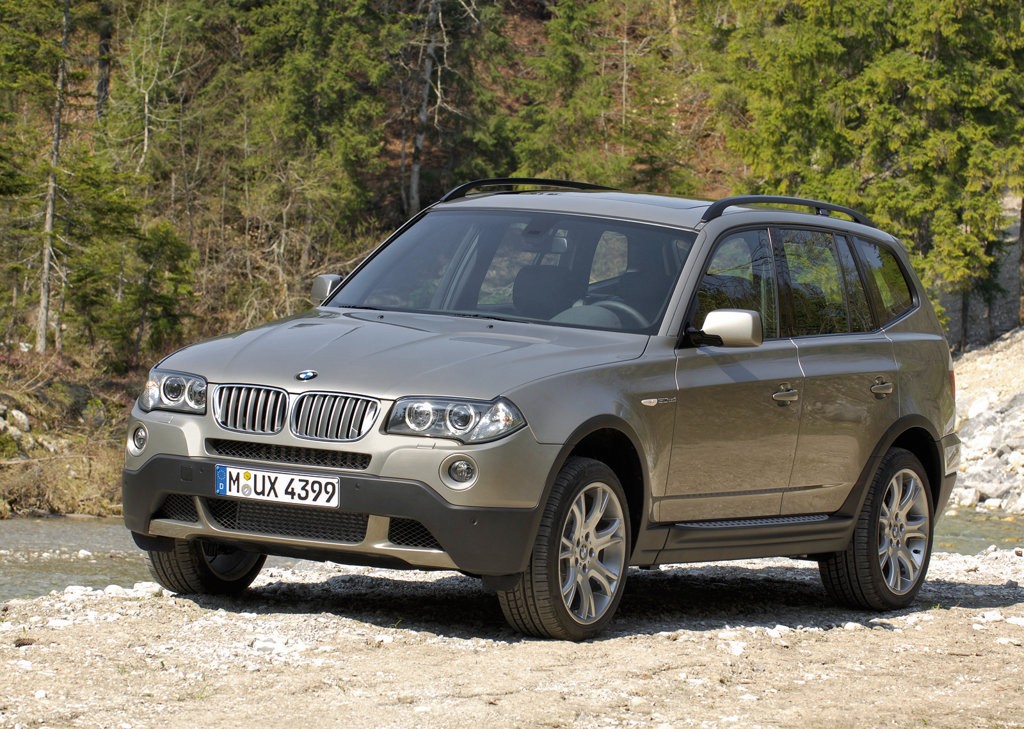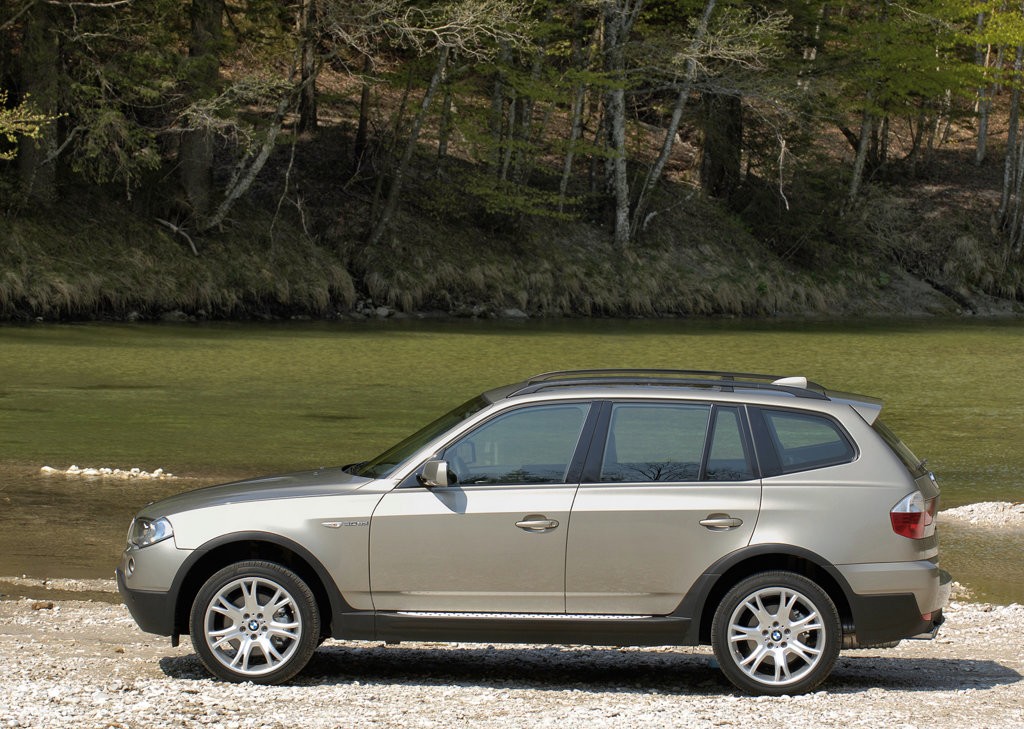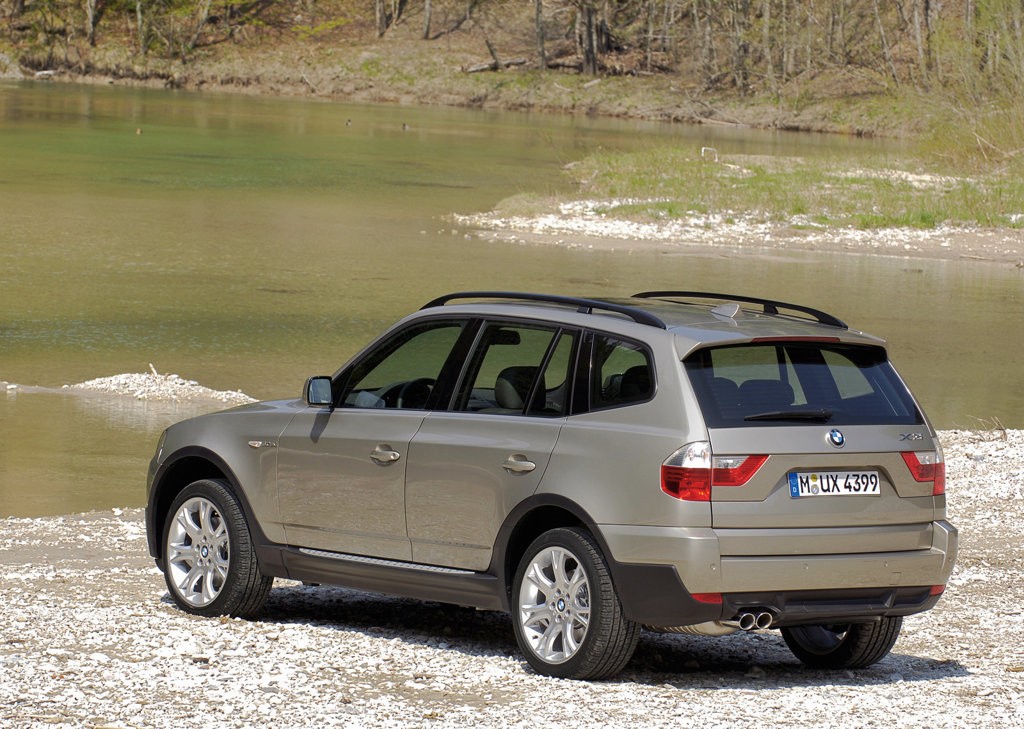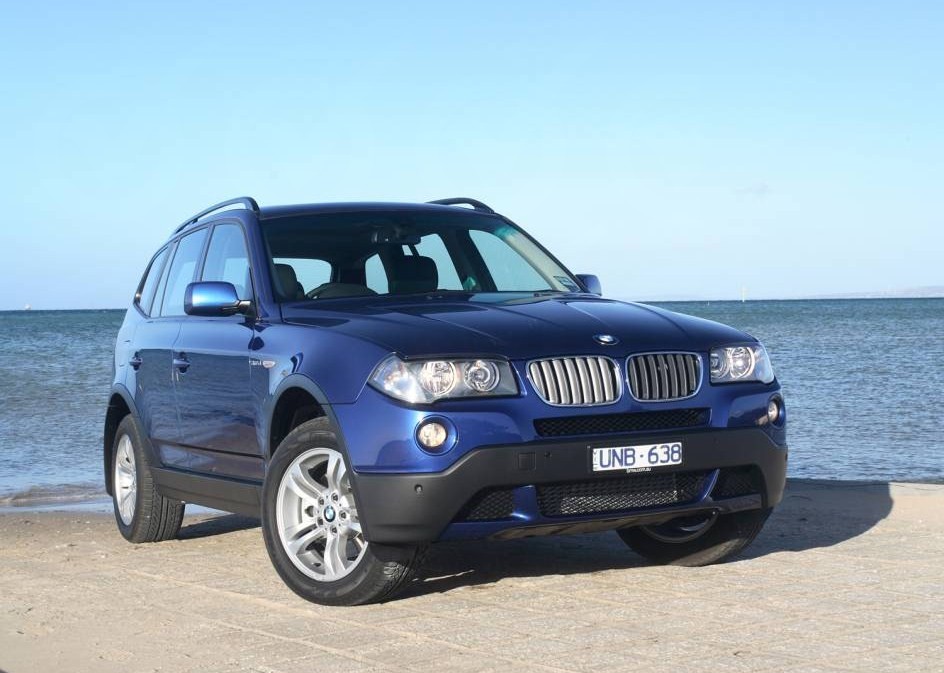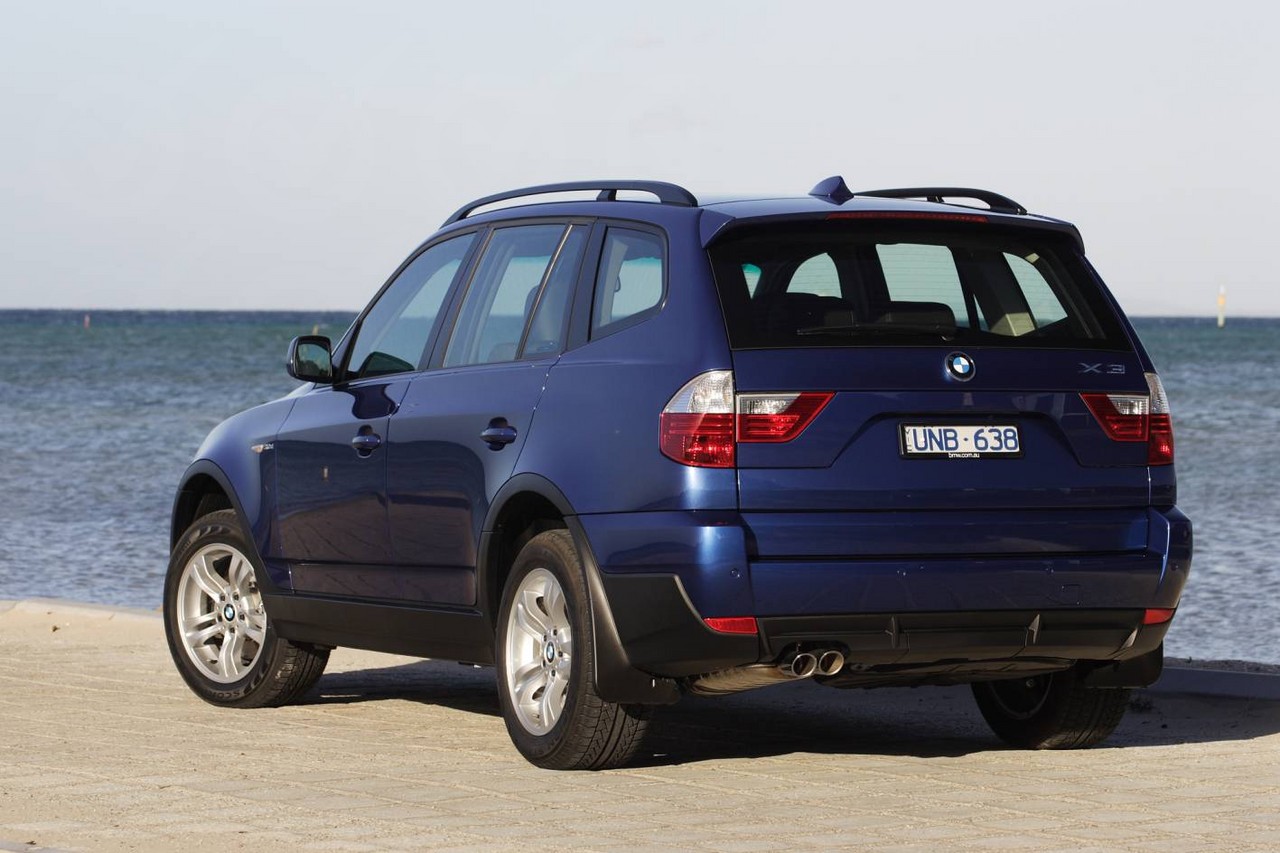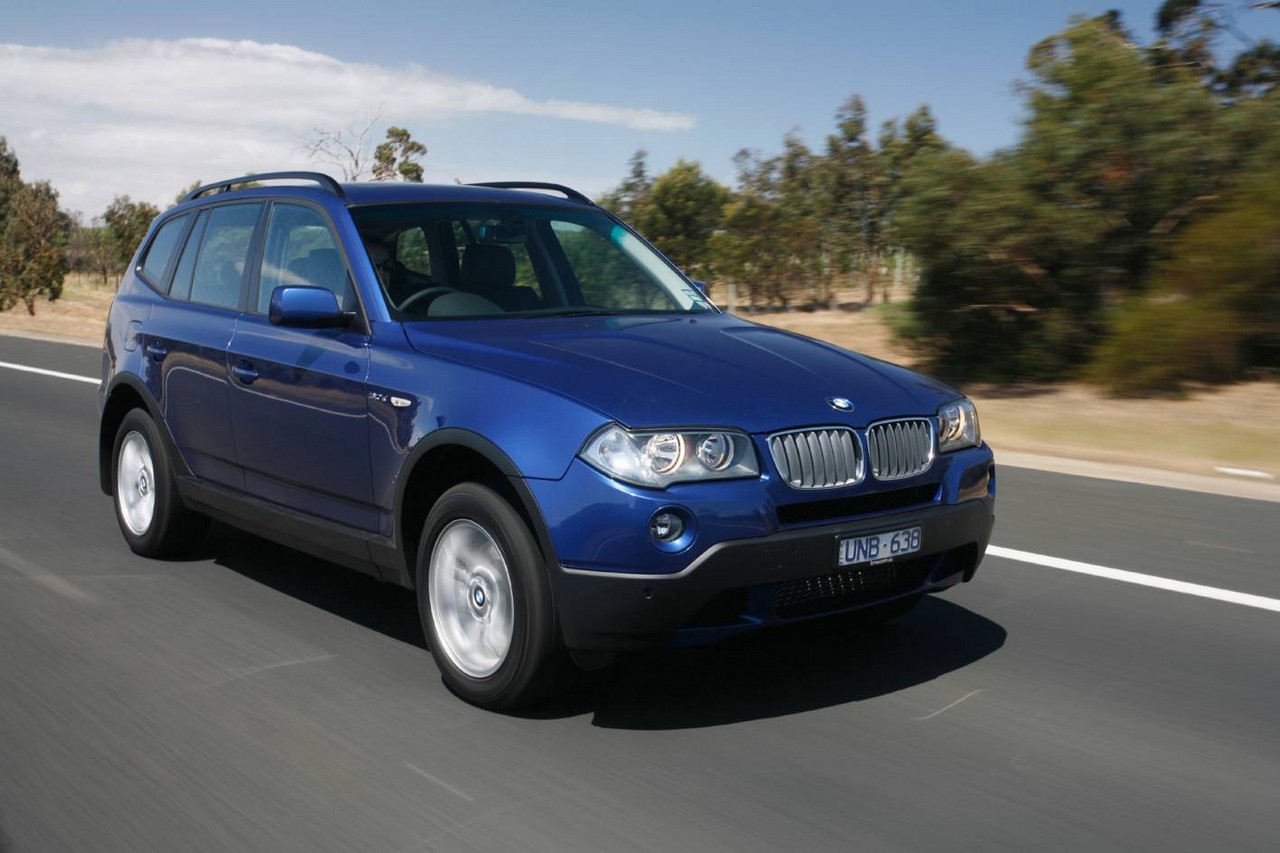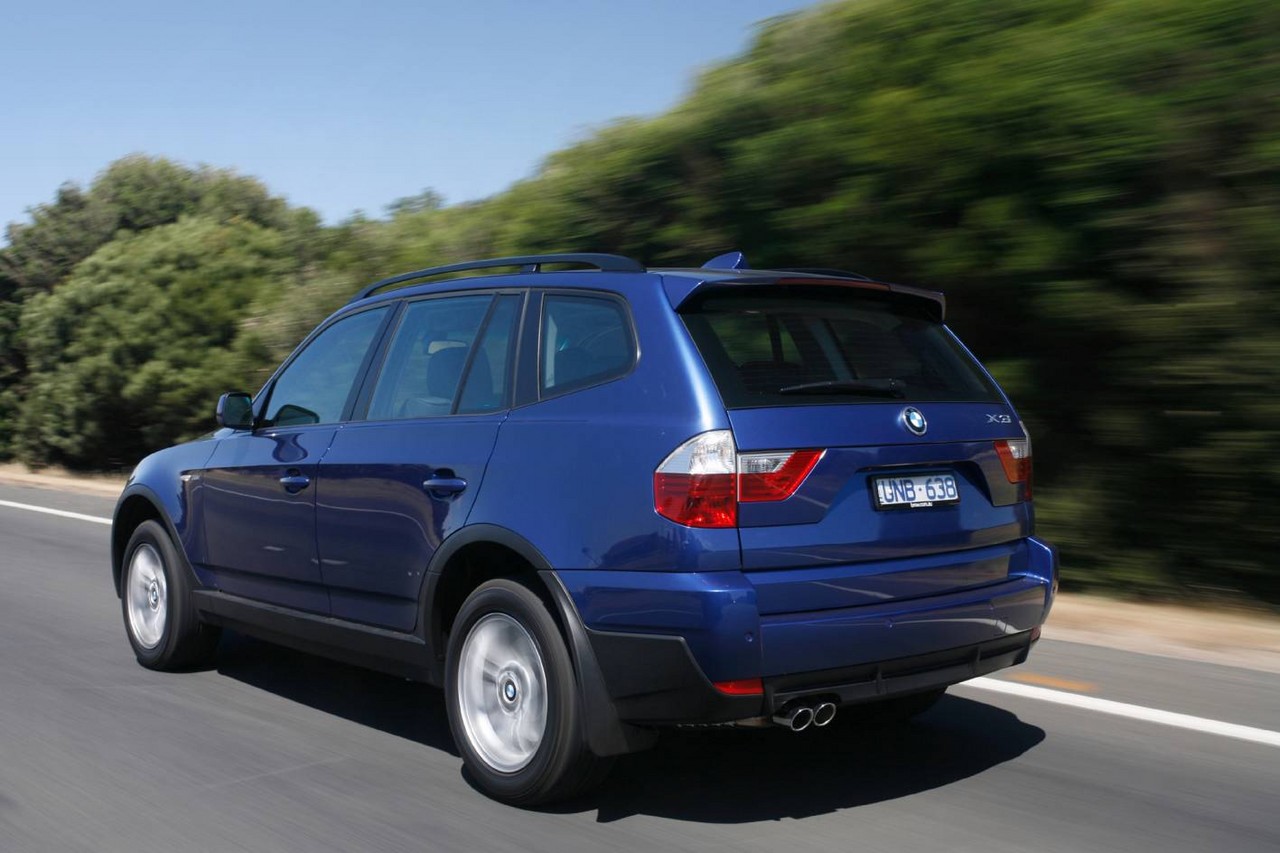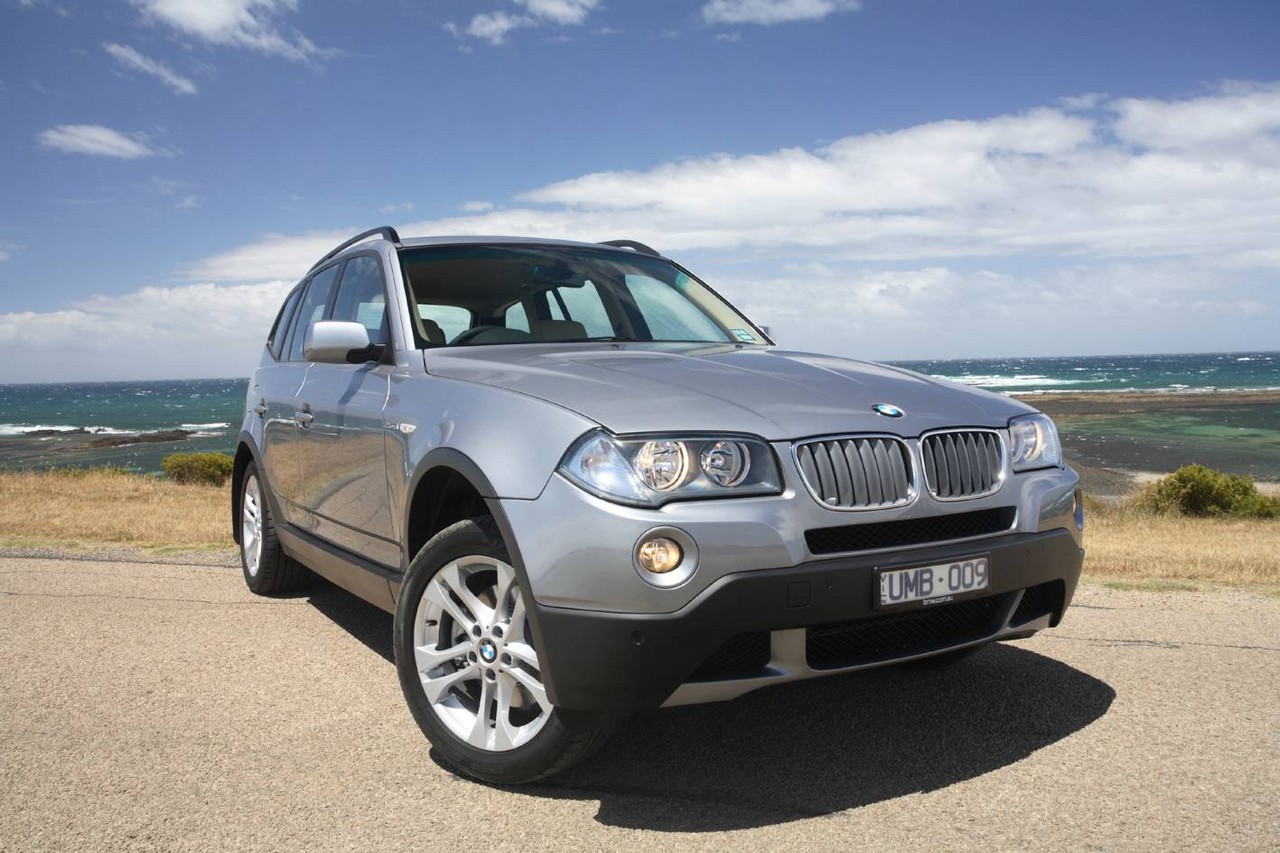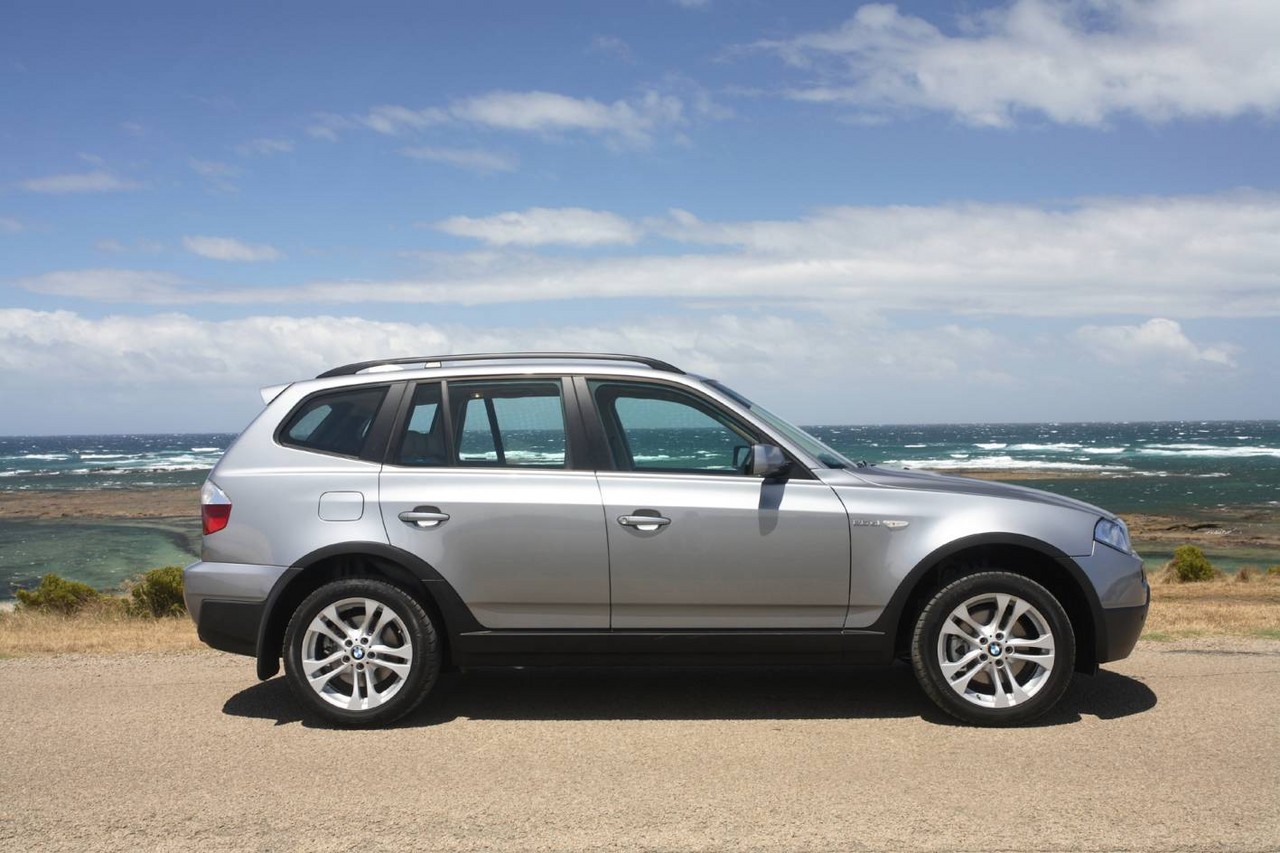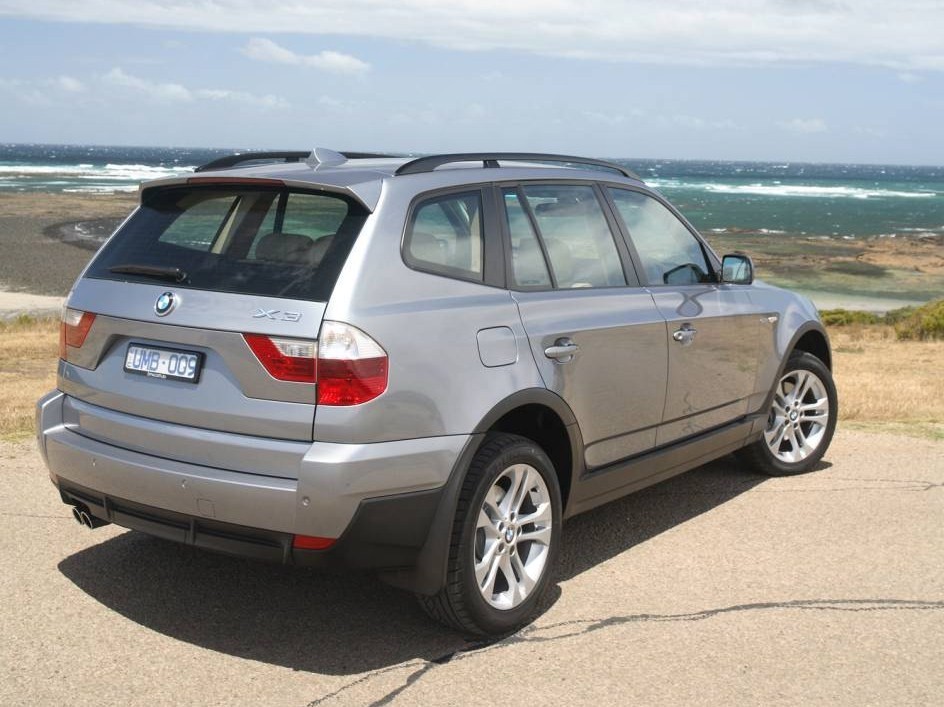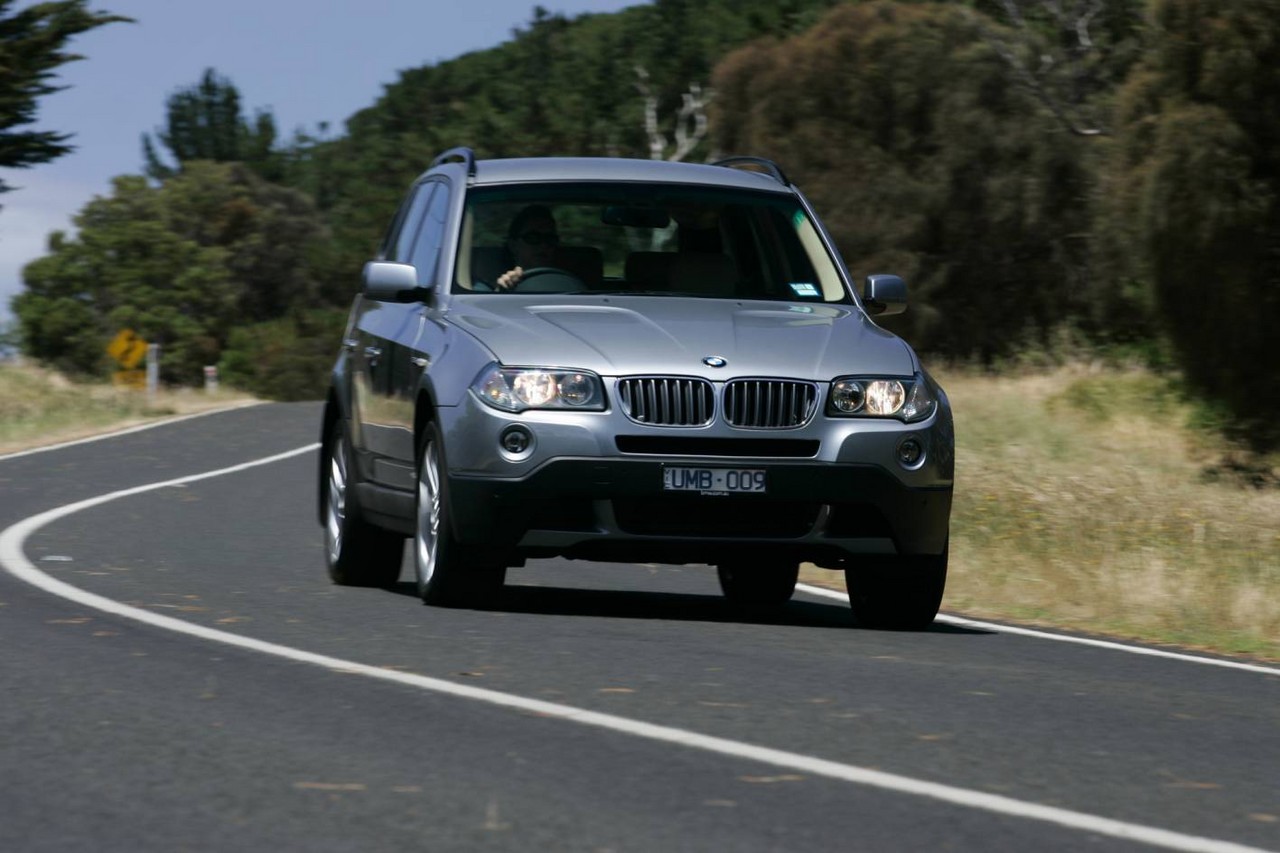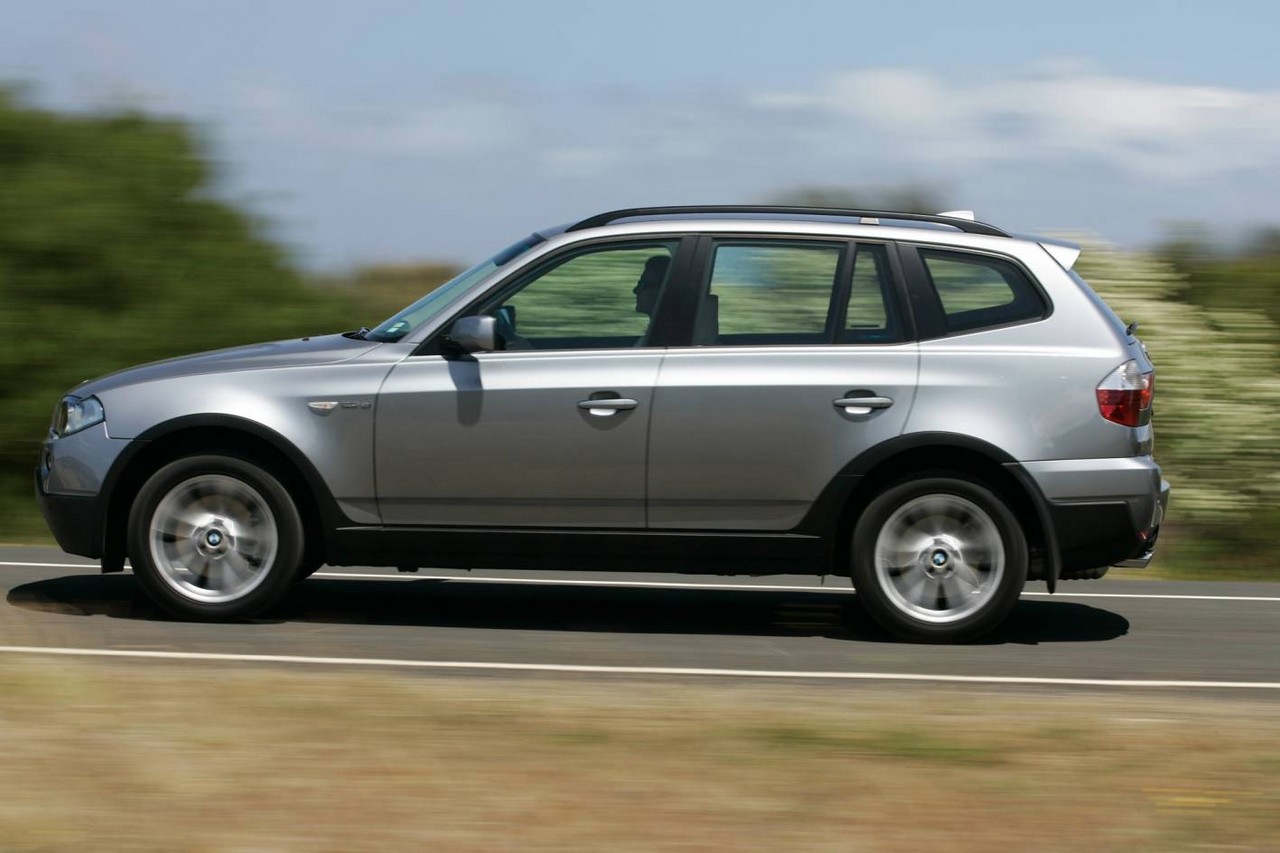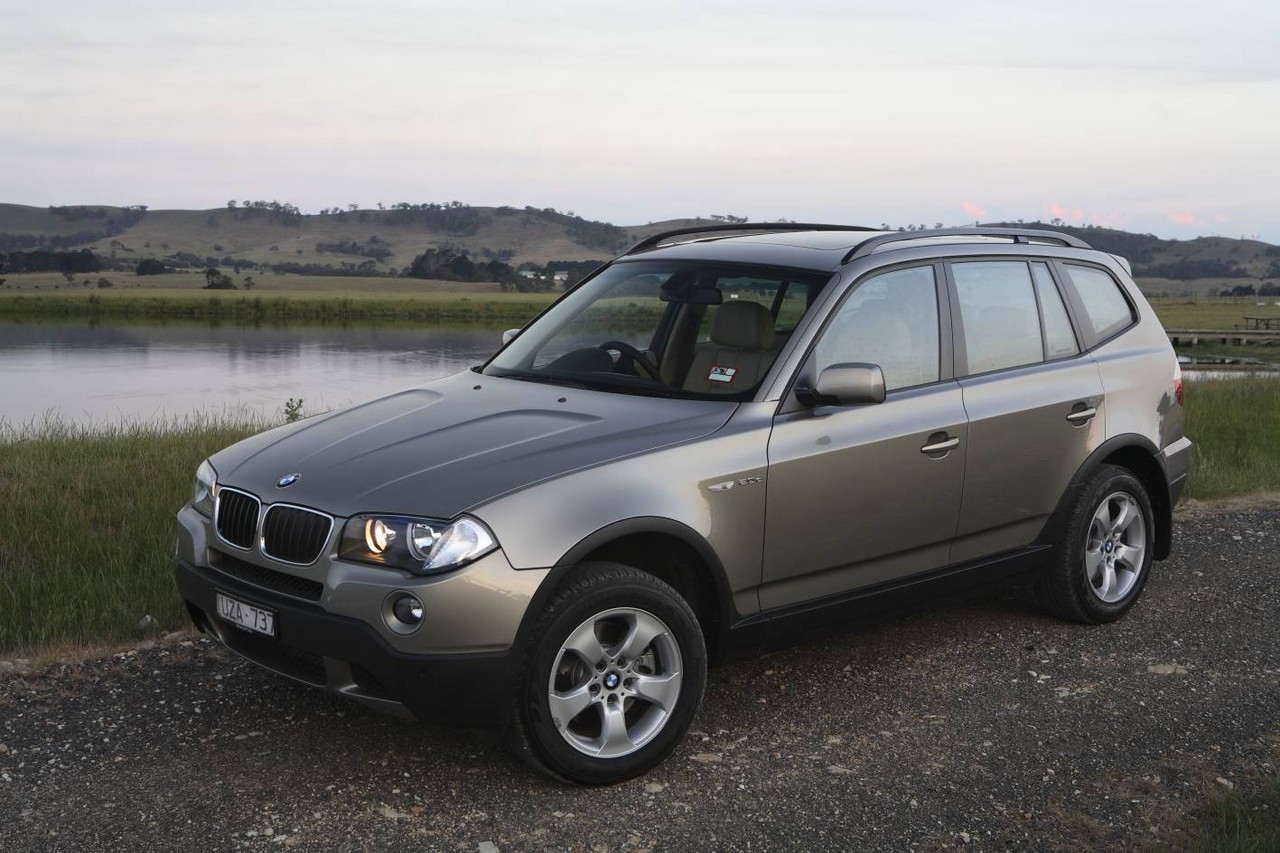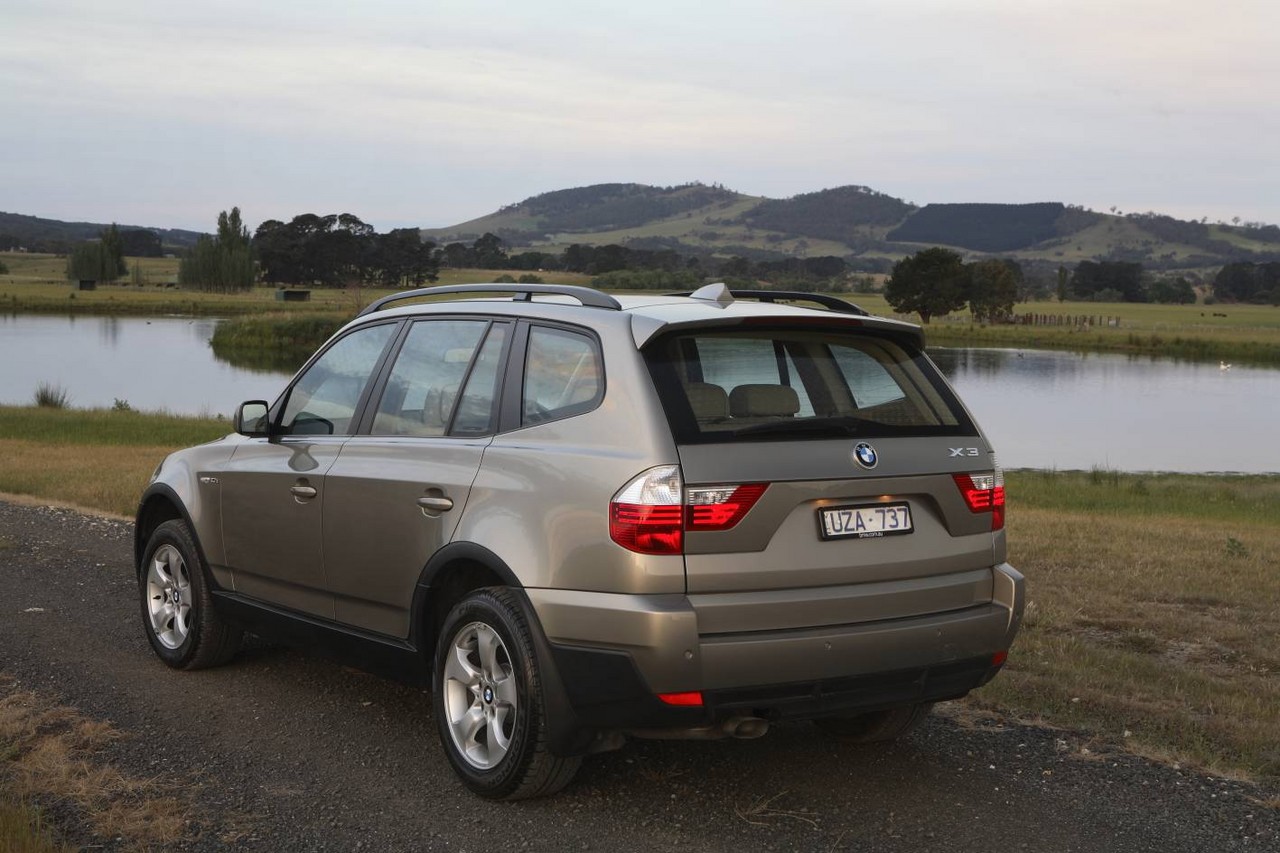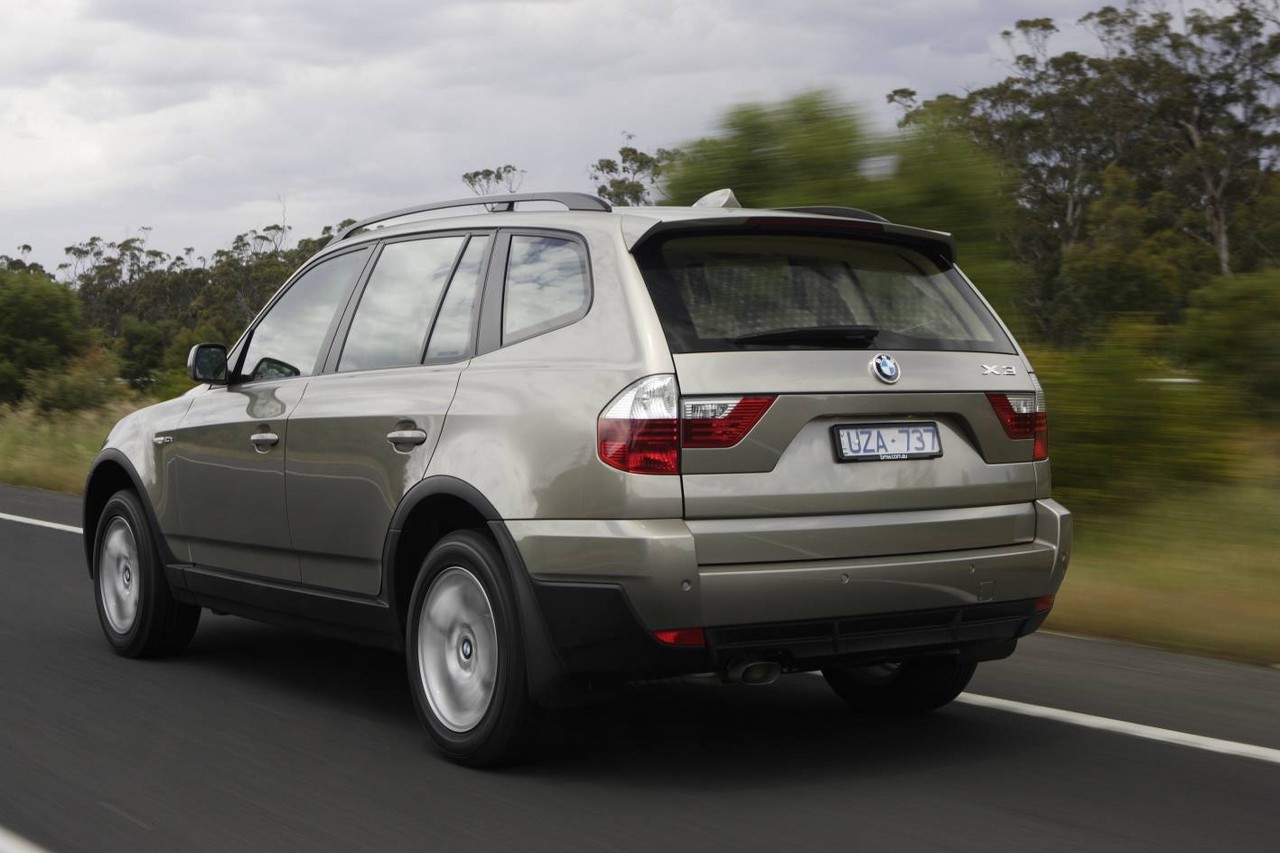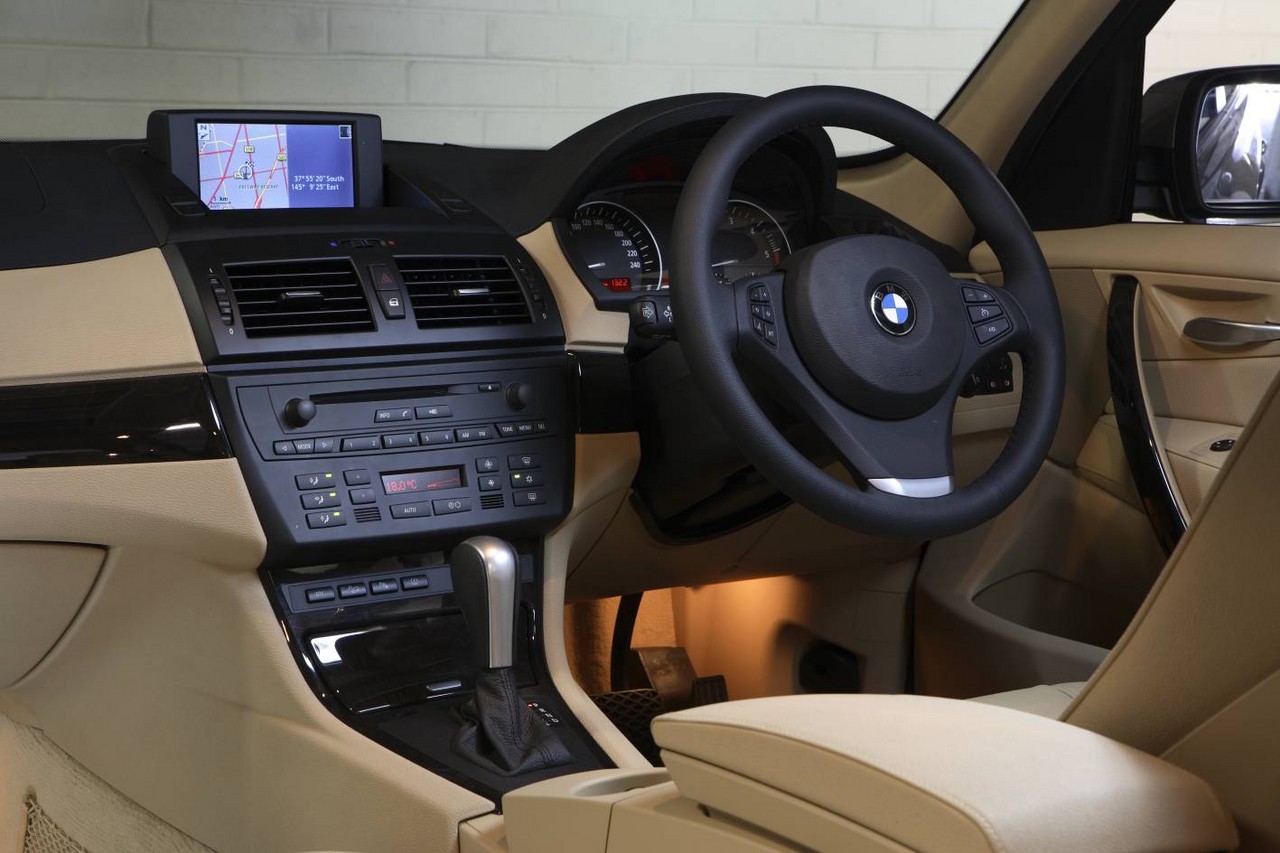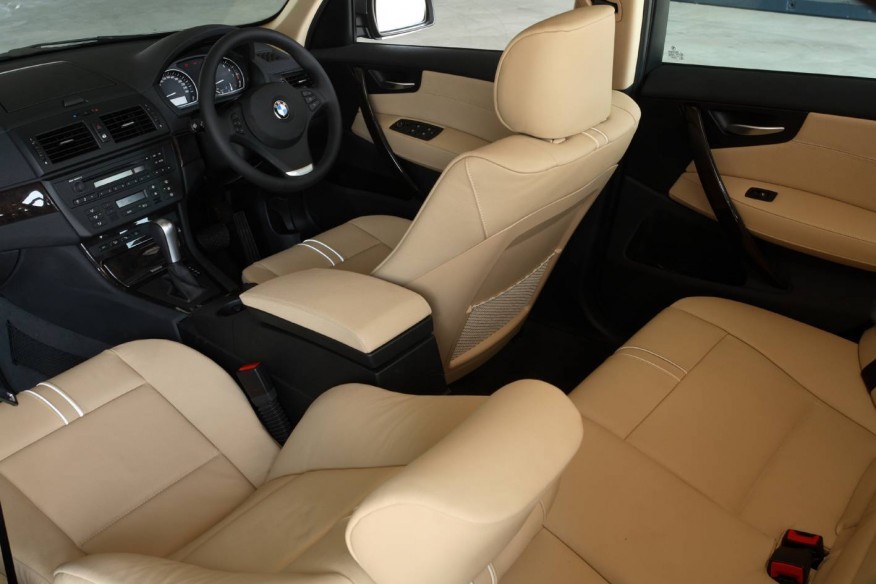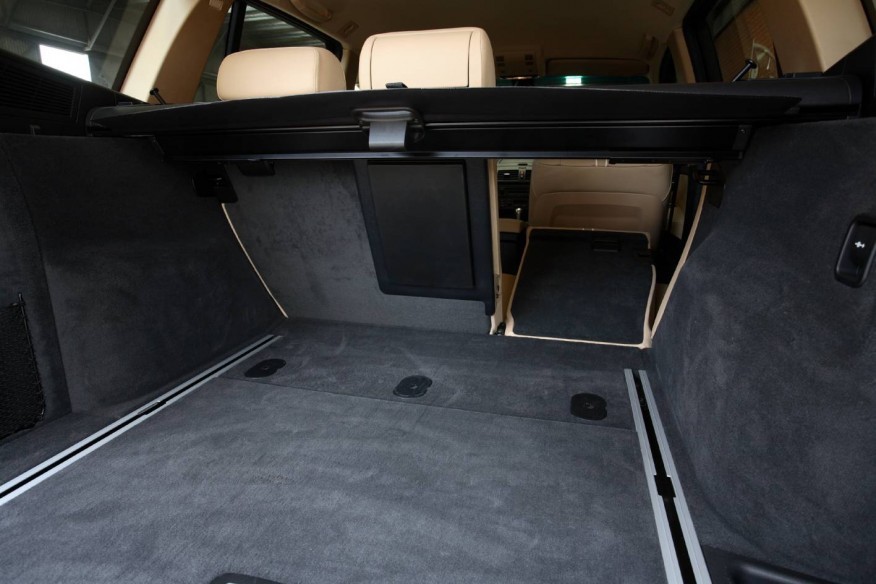
- Refined six-cylinder petrol engines
- Turbo-diesel engines bring grunt
- Spacious interior
- Competent dynamics
- Suspension lacks compliance, especially at low speeds
- Steering lacks traditional BMW feel
- For 2.0-litre N47 turbo-diesel engines, camshaft sprocket teeth could damage the timing chain
- For 2.5- and 3.0-litre M54 engines, VANOS susceptible to failure
- For X3 3.0d, screws for butterfly valves in M57TU2D3 0 engine could come loose and cause engine damage
Review: BMW E83.I X3 (2004-06)
Overview
Released in June 2004, the BMW E83 Mk.1 (E83.I) X3 was a compact, four-wheel drive SUV. Manufactured in Graz, Austria, the E83 X3 range initially consisted of the 2.5i and 3.0i, powered by 2.5- and 3.0-litre inline six cylinder petrol engines, respectively (see table below). In November 2005, the range was expanded with the introduction of the 3.0d, powered by a 3.0-litre inline six cylinder turbo-diesel engine.
The E83 X3 was based on the E46 3-Series platform and, compared to the E46 3-Series sedan , was 94 mm longer (at 4565 mm), 114 mm wider (1853 mm), 259 mm taller (1674 mm) and had a 70 mm longer wheelbase (2795 mm). Furthermore, the X3 had MacPherson strut front suspension and multi-link rear suspension.
| Variant | Engine | Trans. | Years | Peak power | Peak torque |
|---|---|---|---|---|---|
| 2.5i | 2.5-litre petrol I6 (M54 B25) | 5sp auto, 6sp man. |
2004-06 | 141 kW at 6000 rpm | 245 Nm at 3500 rpm |
| 3.0i | 3.0-litre petrol I6 (M54 B30) | 5sp auto | 2004-06 | 170 kW at 5900 rpm | 300 Nm at 3500 rpm |
| 3.0d | 3.0-litre turbo-diesel I6 (M57 TU2D30) | 6sp auto | 2005-06 | 160 kW at 4000 rpm | 480 Nm at 1750-2750 rpm |
xDrive
The X3 was fitted with BMW’s permanent ‘xDrive’ four-wheel drive system which had an electronically controlled, multi-plate clutch in the transfer case. Generally, the clutch was partially engaged and provided a 40:60 front:rear torque split. In addition to partial engagement, however, the clutch could also be fully engaged (50:50 front:rear torque split) or completely open (all torque to the rear wheels) – the latter would occur when driving at high speed or when parking.
The xDrive system interacted with the electronic stability control system such that torque distribution could be varied in response to oversteer or understeer, and individual wheels could be braked to transfer torque to the opposing wheel (i.e. cross-axle torque transfer).
Safety equipment
Standard safety equipment for the E83 X3 included dual front airbags, front and rear side airbags, full-length curtain airbags (i.e. for front and rear occupants), ABS, electronic brake force distribution, brake assist, electronic stability control, cornering brake control, traction control, hill descent control and front and outer rear seatbelts with pretensioners and load limiters.
Euro NCAP crash testing
In Euro NCAP crash testing , a 2008 X3 2.0d received a four star adult occupant protection rating with a score of 27.77 out of 37. In the offset crash test, the passenger compartment held its shape well, but protection from serious chest and leg injury was marginal for the driver; passenger leg protection was also marginal.
Features
Standard features for the X3 2.5i included 17-inch alloy wheels, a six speaker stereo with CD player, climate control air conditioning, cruise control, front fog lamps, automatic headlights, rain-sensing wipers, split and folding rear seats, a leather-wrapped multi-function steering wheel, a leather-wrapped gearshift and handbrake, remote central locking, power mirrors and windows, a tilt and reach adjustable steering wheel, roof rails, an on-board computer and immobiliser. Beyond this, the 3.0i and 3.0d were also fitted with leather seats.
November 2004: X3 update
In November 2004, the X3 received a number of minor updates, including one-piece front fenders, softer suspension for a more compliant ride and the grey-coloured carpets in the 3.0i and 3.0d were replaced with carpets that matched the leather seats.
November 2005: X3 update
In November 2005, the X3 underwent another update (for the 2006 model year) – standard features were extended to include leather seats (previously omitted from the 2.5i), front and rear parking sensors and a rear-seat ski bag; the 3.0i and 3.0d were also fitted with an electrochromatic rear view mirror. Visually, these updated models could be identified by their new 17-inch alloy wheel designs and colour-coded bumpers.
Review: BMW E83.II X3 (2006-08)
Overview
Released in December 2006, the E83 Mk.II (E83.II) X3 introduced new engines, transmissions and cosmetic updates. The E83.I X3 2.5i and 3.0i variants were effectively replaced by the 2.5si and 3.0si, the latter introducing more powerful and fuel-efficient engines which were available with a six-speed ZF automatic transmission. The 3.0d continued and, in December 2007, the range was expanded with the 2.0d.
Visually, the E83.II X3 could be identified by its twin circular headlights, LED tail-lights, revised bumpers, larger front fog lamps and grille. Inside, the E83.II featured higher quality materials, re-shaped front seats, larger storage compartments and a revised centre console, three-spoke steering wheel and instrument panel.
| Variant | Engine | Trans. | Years | Peak power | Peak torque |
|---|---|---|---|---|---|
| 2.0d | 2.0-litre turbo-diesel I4 (N47 D20) | 6sp auto | 2007-08 | 125 kW at 4000 rpm | 340 Nm at 1750-3000 rpm |
| 2.5si | 2.5-litre petrol I6 (N52 B25) | 6sp man., 6sp auto |
2006-08 | 160 kW at 6500 rpm | 250 Nm at 2750 rpm |
| 3.0si | 3.0-litre petrol I6 (N52 B30) | 6sp auto | 2006-08 | 200 kW at 6600 rpm | 315 Nm at 2750 rpm |
| 3.0d | 3.0-litre turbo-diesel I6 (M57 TU2D30) | 6sp auto | 2006-08 | 160 kW at 4000 rpm | 480 Nm at 1750-2750 rpm |
xDrive
Compared to its E83.I predecessor, the E83.II X3 featured new parallel networking of the xDrive system with the electronic stability and engine control systems to react faster to changing conditions.
Safety equipment
For the E83.II X3, the electronic stability control system was also upgraded to include a ‘Brake Standby’ function (pre-aligning the brake linings for more effective braking), brake drying function and brake fade compensation. Furthermore, the electronic stability control could also be switched off.
Features
Standard features were extended to include Bluetooth connectivity; when introduced in 2007, the 2.0d was similarly equipped to the 2.5si.
Review: BMW E83.III X3 (2008-10)
Overview
Released in October 2008, the E83 Mk.III (E83.III) X3 introduced re-named variants, but changes were otherwise limited. The X3 variants adopted the ‘xDrive’ prefix and were all offered as ‘Lifestyle’ editions (the ‘Exclusive’ editions were not offered in Australia). Beyond the name change, the xDrive20d and xDrive30d benefited from increased engine outputs relative to their 2.0d and 3.0d predecessors, and the six-speed manual transmission was discontinued (previously available on the 2.5si).
Visually, the E83.III X3 could be identified by its revised alloy wheel designs, graphite metallic grille finish and chrome exhaust tips; inside, there was a new leather-wrapped steering wheel and pearlescent interior dials.
| Variant | Engine | Trans. | Years | Peak power | Peak torque |
|---|---|---|---|---|---|
| xDrive20d | 2.0-litre turbo-diesel I4 (N47 D20) | 6sp auto | 2008-10 | 130 kW at 4000 rpm | 350 Nm at 1750 rpm |
| xDrive25i | 2.5-litre petrol I6 (N52 B25) | 6sp auto | 2008-10 | 160 kW at 6500 rpm | 250 Nm at 2750 rpm |
| xDrive30i | 3.0-litre petrol I6 (N52 B30) | 6sp auto | 2008-10 | 200 kW at 6600 rpm | 315 Nm at 2750 rpm |
| xDrive30d | 3.0-litre turbo-diesel I6 (M57 TU2D30) | 6sp auto | 2008-10 | 160 kW at 4000 rpm | 500 Nm at 1750 rpm |
Safety equipment and features
Compared to their E83.II X3 predecessors, safety equipment and features for the E83.III X3 were substantially unchanged.
Related links
